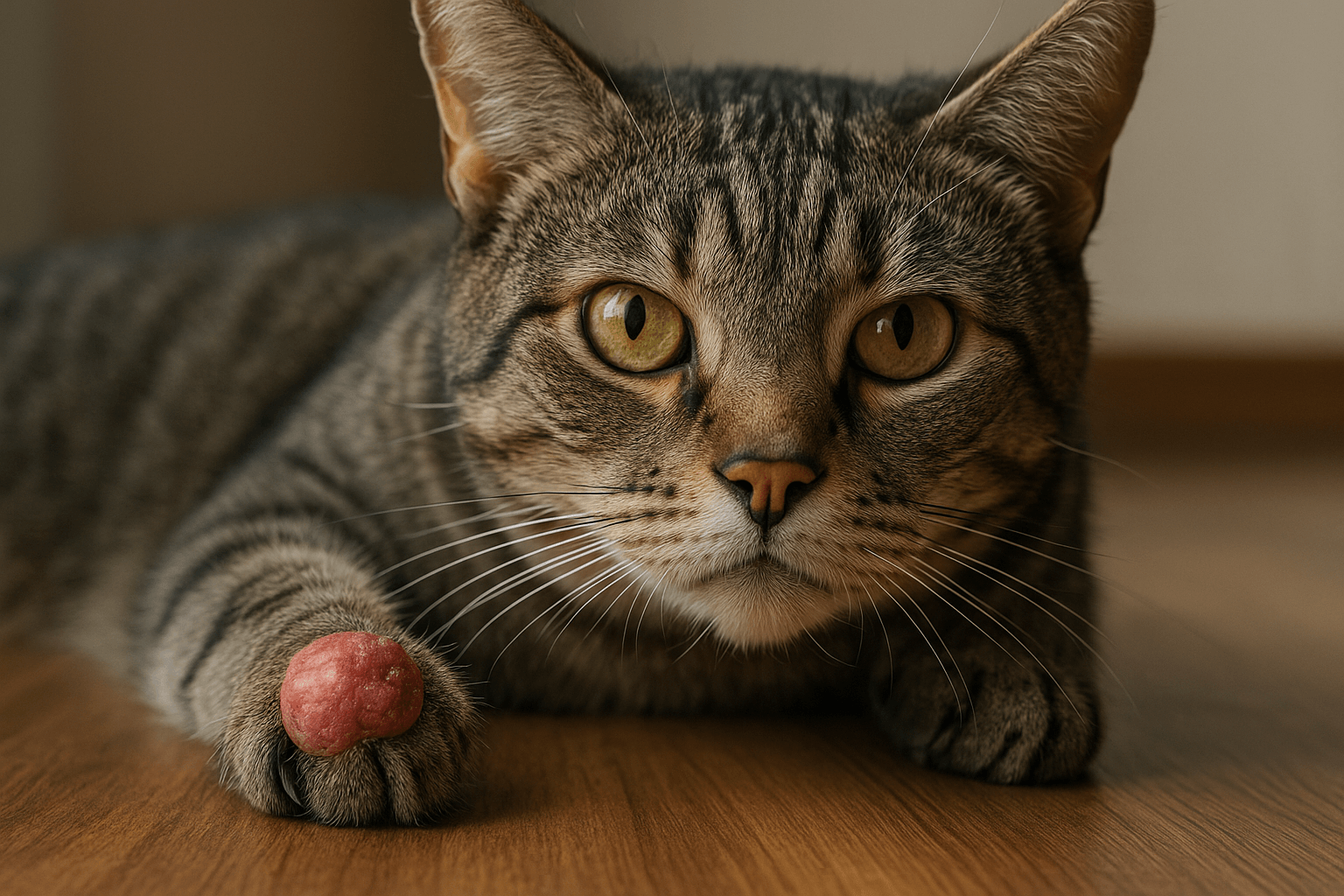Cat Ear Infection Symptoms: How to Spot and Address the Problem
Ear infections in cats are more common than many pet owners realize, and they can cause significant discomfort if left untreated. These infections often stem from underlying issues such as allergies, ear mites, or bacterial overgrowth. Recognizing the symptoms early is crucial for ensuring your feline friend receives prompt veterinary care and relief. From excessive scratching to unusual discharge, there are several telltale signs that your cat may be suffering from an ear infection. In this guide, we’ll explore everything you need to know about identifying, treating, and preventing cat ear infections, helping you keep your furry companion happy and healthy.
Common Symptoms of Cat Ear Infections
Detecting an ear infection early can prevent complications and ensure your cat gets the care they need. Here are some of the most common symptoms to watch for:
Excessive Scratching : Cats with ear infections often scratch their ears persistently, sometimes leading to redness or sores.
Head Shaking : Frequent head shaking is a sign your cat is trying to relieve discomfort or irritation in their ears.
Odor from the Ears : A strong, unpleasant smell coming from your cat’s ears can indicate an infection.
Dark or Yellow Discharge : Abnormal earwax or discharge, often dark brown or yellow, is a key indicator of an issue.
Redness or Swelling : The inside of your cat’s ears may appear inflamed or swollen if an infection is present.
If you notice any of these symptoms, it’s important to consult your veterinarian for a proper diagnosis and treatment plan.
Potential Causes of Ear Infections in Cats
Understanding the root causes of ear infections can help you take preventive measures and address the problem effectively. Here are some common culprits:
Ear Mites : Tiny parasites that thrive in the ear canal, causing intense itching and irritation.
Bacterial or Fungal Infections : Overgrowth of bacteria or yeast can lead to inflammation and discomfort.
Allergies : Food or environmental allergies can trigger ear infections as part of a broader reaction.
Foreign Objects : Grass seeds, dirt, or other debris lodged in the ear can cause irritation and infection.
Underlying Health Conditions : Issues like diabetes or immune system disorders may predispose cats to ear infections.
Identifying the cause is essential for determining the appropriate treatment and preventing future occurrences.
Check this guide 👉Black Dots in Cat Ear: Best 7 Expert Tips!
Check this guide 👉Swollen Cat Ear: Best 7 Expert Tips!
Check this guide 👉Understanding Cat Ear Hematomas: Best 7 Expert Tips!

Symptoms of Ear Infections | Possible Causes |
|---|---|
Excessive scratching | Ear mites |
Head shaking | Bacterial infection |
Unpleasant odor | Fungal infection |
Dark or yellow discharge | Allergies |
Redness or swelling | Foreign objects |
How to Care for Your Cat’s Ears at Home
While professional veterinary care is essential for treating ear infections, there are steps you can take at home to support your cat’s ear health. Here are some tips:
Regular Cleaning : Use a vet-recommended ear cleaner to gently remove excess wax and debris from your cat’s ears.
Monitor for Changes : Check your cat’s ears weekly for signs of redness, swelling, or unusual discharge.
Prevent Moisture Build-Up : After baths or outdoor play, ensure your cat’s ears are dry to prevent fungal growth.
Avoid Using Cotton Swabs : Inserting objects into your cat’s ears can cause damage; instead, use soft cloths or gauze.
Look for Behavioral Cues : Pay attention to changes in behavior, such as excessive scratching or head tilting, which may signal an issue.
By incorporating these practices into your routine, you can help maintain your cat’s ear health and reduce the risk of infections.
When to See a Veterinarian for Ear Infections
While mild ear irritation may resolve on its own, certain situations require immediate veterinary attention. Here’s when you should seek professional help:
Persistent Symptoms : If symptoms like scratching or discharge continue for more than a day or two, consult your vet.
Severe Pain : Signs of pain, such as vocalization or aggression when touched, indicate a serious issue.
Balance Problems : Head tilting or difficulty walking suggests a possible inner ear infection.
Blood or Pus : Any bleeding or pus-like discharge requires urgent veterinary evaluation.
Recurring Infections : If your cat frequently develops ear infections, further investigation into underlying causes is necessary.
Prompt veterinary care ensures your cat receives the treatment they need to recover fully and avoid complications.
Proactive Steps to Keep Your Cat’s Ears Healthy
Preventing ear infections is always better than treating them. By taking a few simple precautions, you can significantly reduce the risk of your cat developing an ear infection. Here are some preventive measures:
Regular Vet Check-Ups : Schedule routine veterinary visits to catch potential issues before they escalate.
Keep Ears Dry : After baths or exposure to water, gently dry your cat’s ears to prevent moisture buildup.
Control Parasites : Use flea and tick prevention products to minimize the risk of ear mites and other parasites.
Maintain a Clean Environment : Regularly clean your home to reduce allergens and debris that could irritate your cat’s ears.
Feed a Balanced Diet : Proper nutrition supports your cat’s immune system, helping them fight off infections more effectively.
By incorporating these habits into your routine, you can help safeguard your cat’s ears and overall health.
Steering Clear of Counterproductive Practices
When dealing with an ear infection, it’s easy to make mistakes that could worsen the condition or delay recovery. Here are some common pitfalls to avoid:
Using Human Medications : Over-the-counter ear drops for humans can be harmful to cats and should never be used without veterinary approval.
Ignoring Symptoms : Assuming the issue will resolve on its own can lead to complications like chronic infections or hearing damage.
Over-Cleaning the Ears : Excessive cleaning can irritate the ear canal and exacerbate the problem.
Skipping Follow-Up Appointments : Failing to complete treatment or skipping follow-ups can result in recurring infections.
Neglecting Underlying Causes : Treating only the symptoms without addressing the root cause can lead to repeated flare-ups.
Avoiding these mistakes ensures that your cat receives the best possible care and recovers fully from their ear infection.
Recognizing Progress During Treatment
As your cat undergoes treatment for an ear infection, it’s important to monitor their progress to ensure the infection is resolving. Here are signs that your cat is improving:
Reduced Scratching : A decrease in ear scratching indicates that irritation is subsiding.
Less Discharge : Clearer or reduced ear discharge is a positive sign of healing.
Improved Odor : A return to normal ear smell suggests that the infection is being controlled.
Increased Comfort : If your cat seems less agitated or painful, it’s a good indication that treatment is working.
Normal Behavior : A return to playful or relaxed behavior shows that your cat is feeling better overall.
By observing these improvements, you can confirm that the treatment is effective and consult your vet if further adjustments are needed.
Frequently Asked Questions About Cat Ear Infection Symptoms
How can I tell if my cat has an ear infection?
Look for signs like excessive scratching, head shaking, odor, discharge, or redness in the ears.
Can ear mites cause infections in cats?
Yes, ear mites are a common cause of ear infections and often lead to secondary bacterial or fungal infections.
Is it safe to clean my cat’s ears at home?
Yes, but use vet-approved products and avoid inserting objects into the ear canal.
Can allergies lead to ear infections in cats?
Yes, allergies can cause inflammation in the ears, making them more susceptible to infections.
How long does it take to treat an ear infection in cats?
Treatment duration varies depending on the cause but typically ranges from a few days to several weeks.
Prioritize Your Cat’s Ear Health for a Happy Life
Ear infections in cats can be uncomfortable and even painful if left untreated, but with vigilance and care, you can catch problems early and ensure your cat stays healthy. By recognizing the symptoms, understanding the causes, and seeking timely veterinary care, you can address infections effectively and prevent them from recurring. Regular ear checks, proper cleaning, and attention to behavioral changes are simple yet powerful ways to protect your feline friend. With love and dedication, you can help your cat enjoy a life free from the discomfort of ear infections.
Cuterebra Larvae in Cats: Best 7 Expert Tips! – Expert advice on signs, treatment & prevention of this rare but serious feline parasitic infestation.
Cuterebra Larvae in Dogs: Best 7 Expert Tips! – Expert advice on signs, treatment & prevention of this rare but serious parasitic infestation.
Cat Tumor on Paw: Best 7 Expert Tips! – Expert advice on signs, diagnosis, treatment & care for feline paw tumors.
Panacur Side Effects in Dogs: Best 7 Expert Tips! – Safe usage, common reactions & when to call the vet.





